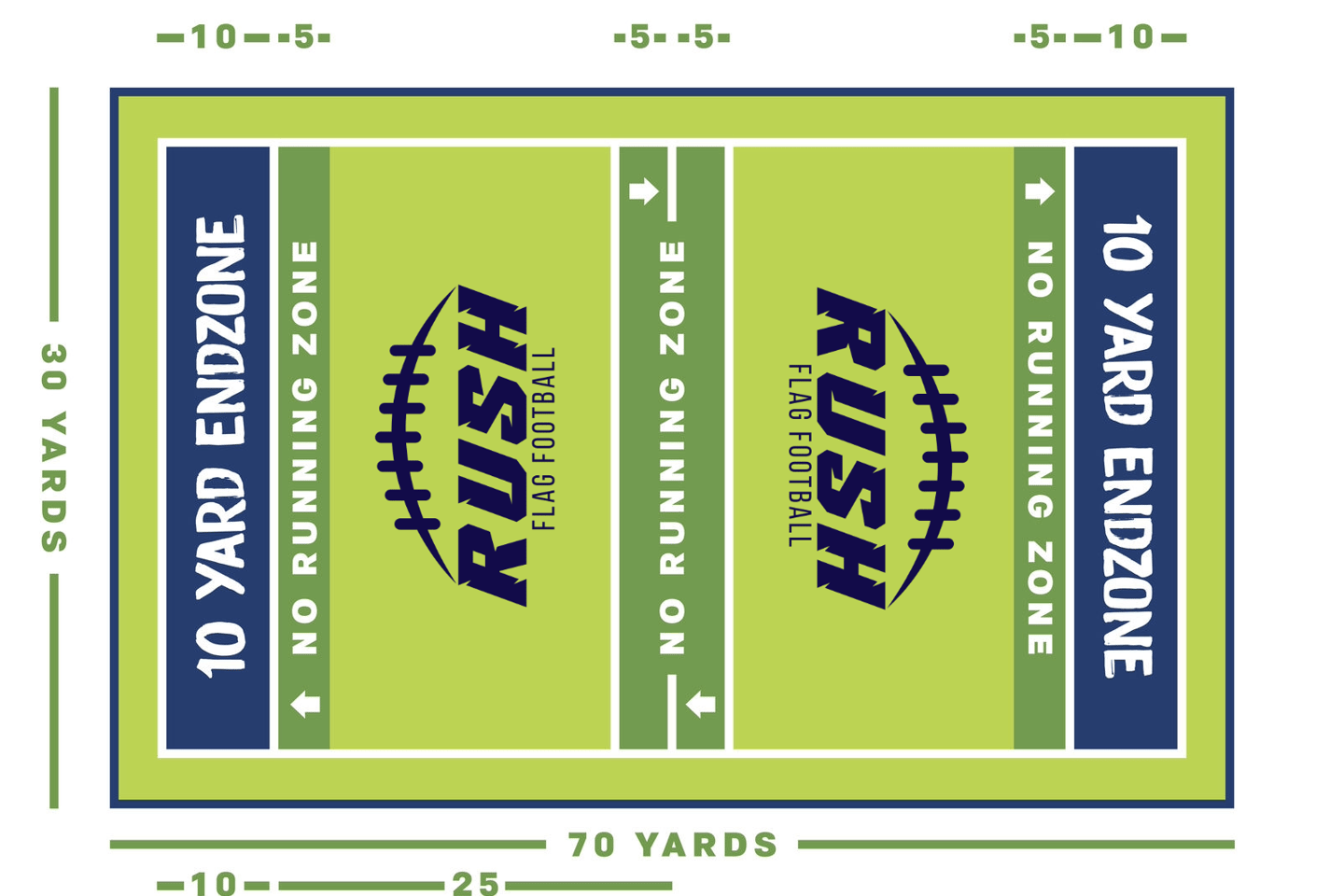FLAG FOOTBALL RULES
WHAT ARE THE RULES OF FLAG FOOTBALL?
The first rule of flag football is pretty straight forward: there’s no contact allowed. That includes tackling, diving, blocking, and screening. Instead, players wear flags that hang along their sides by a belt. To “tackle” the person in possession of the ball, the opposing team needs to pull one or both of their flags off.
While flag football rules are designed to keep players safe, you’ll find that they also create an engaging, fast-paced version of football without the physical contact.
Here’s a list of basic flag football rules:
All passes must be forward and received beyond the line of scrimmage.
Direct handoffs as well as unlimited backward pitches and passes are allowed behind the line of scrimmage. No backwards passes or direct handoffs are allowed past the line of scrimmage.
The quarterback has 7 seconds, from receiving the snap, to release the ball. Once a backwards handoff, pass or lateral occurs, the 7 second rule goes away and the offense has an unlimited amount of time to throw a forward pass.
The player receiving the snap (QB) cannot run across the line of scrimmage with the ball. The QB can hand off or pitch/throw the ball backwards to a teammate and then catch a forward pass across the line of scrimmage.
Offensive players must steer clear of the rusher and may not get in his/her way.
A maximum of 2 designated defensive rushers may legally rush the quarterback. All designated rushers must identify themselves, with their hand raised until the snap, to legally rush from the 7 yard rush line. Designated rushers are not obligated to rush, but if they do, they must rush immediately upon the ball being snapped.
Once the ball is handed off, pitched or thrown backwards by the offense, all defenders are eligible to rush across the line of scrimmage.
Interceptions are returnable for 6 pts. during a scrimmage down or for 2 pts on any extra point attempt. A backwards pass intercepted in the air, behind the line of scrimmage, can also be advanced by the defense for a score.
The ball is dead when it hits the ground, the offensive player’s flag is pulled from their belt, the ball-carrier steps out of bounds, or the ball-carrier’s body—outside of their hands or feet—touches the ground.
All offensive flag football penalties result in a loss of down and yardage.
All defensive flag football penalties result in an automatic first down and some are associated with yardage.
For a complete list of flag football rules, download the NFL FLAG Football Rule Book.
NFL FLAG football is a non-contact sport. There’s no tackling, diving, blocking, screening or fumbles.
FLAG FOOTBALL RULES
One of the first questions families ask us is: how many players are on a football team? Rush Flag Football teams compete 5 on 5, but you may find various leagues out there—6 on 6, 7 on 7, 9 on 9—depending on the region and age group. Rush Flag Football rules allow up to 10 players total per team.
To accommodate a smaller team size, a flag football field is shorter than a typical football field at 30 yards wide and 70 yards long, with two 10-yard end zones and a midfield line-to-gain.


Here’s a quick overview of how to play flag football: Every game begins with a coin toss to determine which team will start with the ball (there’s no kickoff per flag football rules). Games are two 24 minute halves, depending on the league, and the clock only stops for injuries, half-time and timeouts (each team has one 60-second timeout per half).
The starting team begins on its own 5-yard line and has four downs (essentially four plays) to cross midfield for a first down. If the offense fails to advance after three tries, they have two options: they can "punt," which means they turn the ball over to the opposing team who starts its drive from its own 5-yard line, or they can go for it. But if they still fail to cross midfield, the opposing team takes over possession from the spot of the ball.
If the offensive team crosses midfield, they have three downs to score a touchdown. The rules of flag football only differ slightly from tackle when it comes to scoring: a touchdown is 6 points and a safety is 2 points (1-point conversion from the 5-yard line; 2-point conversion from the 10-yard line).
